East Flanders & Antwerp July 6-8 and 12-13, 2018
After my circuit around Liège, I drove to Tongeren and then into the Netherlands to see Maastricht and the surrounding area, returning to East Flanders at the National Park.
TONGERIN (pop 30,600)
Just across the border from Liège Province in Eastern Flanders, I visited this city completing a complete circle around Liège. It is an Attempted World Heritage Site listed for its cultural ensemble.
Claiming to be Belgium’s oldest city, it was a prosperous 2nd-century Roman settlement on the Cologne-Bavay Roman road. By the 4th century, it had become one of the Low Countries’ earliest Christian bishoprics, but in 1677, it was catastrophically torched by Louis XIV’s French troops. Today it retains 8 sections of Roman walls and has a famous antique market on Sundays.
Grote Markt. The city’s main square is lined by cafes.
Ambiorix Statue. In the Grote Markt, this large muscular statue venerates the local chieftain who led a brief 54BC revolt against Julius Caesar’s Roman rule, losing 8000 men in the process. Ambiorix was largely forgotten by historians until the 1830s when Belgium was newly founded and in need of national heroes. The statue dates from 1866.
Onze Lieve Vrouwebasiliek. This large, mostly 14th to 16th-century church dominates the Grote Markt, Tongerin’s main square. The church marks the first place north of the Alps where the Virgin Mary is said to have been worshipped. Every seventh year in July, a venerated 1479 walnut Madonna statue is paraded around town in the large-scale but staid Kroningsfeesten procession. The basilica’s rich treasury has artifacts dating back to the 6th century.
Gallo-Roman Museum. Besides and part of the church, this museum uses multimedia and thousands of artifacts to show the way of life at the time of Tongerin’s Roman heyday.
National Park Hoge Kempen. This national park is a vast area of wild dense forest with farms and villages scattered through it. Google Maps took me to Lietsberg, a blocked entrance and the middle of a bare-foot walking path. There was a tower, Indian teepee, mud walk and it looked like a fun experience. The park is littered with towns as part of the below Industrial Transition Complex, an area of coal mining.
INDUSTRIAL TRANSITION COMPLEX – HOGE KEMPEN
Listed as a World Heritage Site, the Hoge Kempen Plateau is a mixed, evolutionary cultural landscape, making an entangled union. The geological formation of the subsoil – an underground coal layer and the lean, barren, gravel-rich sand at the surface, (this sizeable river sediment cone formed during the most recent Ice Ages – pebbles, gravel deposits, glacial ground profiles, dry valleys, and wind-borne sand deposits), mainly resulting in heathland, coniferous and ancient forests. There are very pronounced plateau edges due to the river Meuse cutting through its own sediment.
Due to human intervention since Neolithic times, inland heather vegetation developed on this sand, which was the basis for agriculture for centuries.
The discovery of coal ensured that an entire industry developed employing people from all over Europe (1902 – 1980’s). These two land-based economic phenomena had an enormous architectural and social impact.
The unique feature that the Hoge Kempen area is the transition from a rural to an industrial society, both visibly represented next to each other. It includes unique community expression of local, Southern, and Eastern European cultures as a result of 20th-century migration flows organized and/or initiated by the mining industry.
The Hoge Kempen area covers the following municipalities partly or as a whole: As, Dilsen-Stokkem, Genk, Lanaken, Maaseik, Maasmechelen, Opglabbeek and Zutendaal Several villages, town centres, hamlets and garden cities – the former colliers of Winterslag, Waterschei, Zwartberg and Eisden. These still retain their typical street patterns, plantation instructions, and architectural features. A selection of the buildings are listed as monuments. Belonging to the mining districts are the landmarks of the early 20th-century collieries: headgear and slag heaps (spoil tips). There are also former gravel and sand quarries currently being transformed into scenic nature areas.
At the heart of the area lies Hoge Kempen National Park (5700 hectares) which is surrounded by more forests, heathland and scenic areas, village centers, and streams.
Comparison with other similar properties. The World Heritage List was inspected looking specifically at cultural landscapes in Europe: glacial landscape formation, heather vegetation, artists, land use, mixed heritage, and mining history (with a focus on the last 3 benchmarks). Based on these elements, 10 were studied more in detail with regard to their similarities and differences: Cornwall & West-Devon mining landscape (United Kingdom), Blaenavon industrial landscape (United Kingdom), Mont Perdu (France & Spain), Saint Kilda (United Kingdom), South Öland (Sweden), Rhine Valley (Germany), Hortobágy (Hungary), Val d’Orcia (Italy), Portovenere – Cinque Terre (Italy) and the Madriu Valley (Andorra).
There are few landscapes with industrial characteristics (only Cornwall and Blaenavon). The other landscapes are characterized by (pastoral) rural land use, and they tend to be located in mountain areas or focus on the wealthy local trading or cultural history (the Rhine Valley and Val d’Orcia). There are only two “mixed” cultural landscapes: Mont Perdu and Saint Kilda, which are not industrial landscapes.
Bokrijk Openlucht Museum. Outside of Genk, this open-air museum offers a look at Flanders’ past with over 100 original old buildings reassembled here in 1958 and undergoing constant renovation since. It starts with a farming community with many animals and moves through a sixties recreation. Some of the signs have English but the few demonstrations were all in Flemish and some houses had no English. None show the origin of the original building, street signs are only in Flemish and it was hard to know where to go. I didn’t enjoy this much – the inside of the homes was realistic but the outside looked like a theme park. The presence of many restaurants detracted from the recreated look. €12.50 concession + €5 for parking.
Limburg. In the NM small town series, I had a helluva time finding this town – does it exist? Google Earth took me a spot in the woods. Limburg is the name of the province in this part of East Flanders.
HASSELT (pop 75,000)
Belgium’s unofficial gin capital has a gin festival on the 3rd weekend in October. The town’s little barrel-carrying man dispenses gin briefly. This is a crazy place to drive with so many one-ways and pedestrianized streets, it was impossible. Parking was non-existent but I eventually got out and walked 10 minutes to the gin museum.
Nationaal Jenevermuseum. Housed in a restored, still active 19th-century distillery, it tells all there is known about gin.
Crematorium Hefheide. In the NM Modern Architecture series, it is about 45 km east of Brussels. I expected smokestacks but there were none. The crematorium runs west to east with a large parking area on the north side. The main crematorium is a windowless 20m wide X 110m long X 10m high windowless concrete block. There is a cladding of many 30cm X 6m rusted iron rectangles that are suspended about 3m outside the box of concrete. Each rectangle is angled differently to break up the façade. Separated by a 6m walkway, at the east end is a second similarly spare concrete building about 20m wide X 35m long that contains a cafeteria and family rooms. The only windows are on the east end of the cafeteria which has a small area with tables and chairs outside. A driveway descends into the bowels of the structure at the west end. All the doors and parking signs are of the same rusted metal.
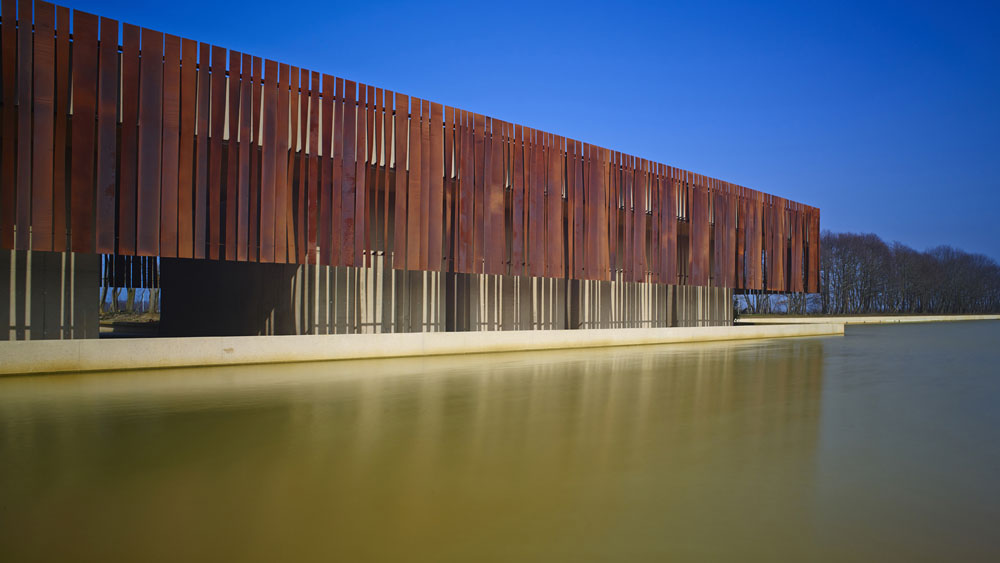

The building is surrounded by a lovely moat full of cattails, some water plants, little fish, and a few ducks. A small lake extends to the east of the outside seating area. Separating the parking area from the structure is a 10m wide row of mature trees. On the south side is an orchard probably not part of the property and to the SE a large area of grass and newly planted trees.
It was opened in 2014 with funding from the European Union and three local governments.
I love crematoriums as they are the only reasonable way to deal with dead people. It amazes me the amount of room devoted to cemeteries. In the mid-1800s, church graveyards were the main way Christians were buried, but they were very unsanitary, and most had run out of room. As a result, many large cemeteries were built outside cities all over Europe (Highgate outside of London is one of the most famous). Besides using valuable land, they are a waste of a coffin, embalming, maintenance of the cemetery, headstones, good clothes to dress the dead in – I could go on and on. And many headstones deteriorate so ones before 1850 are often hard to read. I do like the grave slabs that now adorn the walls of many a church. Some of the best are in the Orkney and in Liège Belgium.
Although many other religions bury their dead (Moslems, Jews), Christianity has a perverse love of cemetery burial – it is all about going to heaven with an intact body and living forever after. What a load of hooey. Paris had the best idea – when there was no more room in the cemeteries in the city, they dug them all up and put the bones in the catacombs. The Capuchins also had some interesting ideas: the monastery in Rome has great decorations using bones to make chandeliers and decorative wall “ornaments”.
Hindus burn their dead in wood pyres but it uses a lot of valuable wood and makes funerals in India quite expensive. The ghats in Varanasi and Katmandu are the best examples I have been to.
I have requested sky burial in my will. In Tibet, bodies are placed on pyres on the top of mountains to feed the vultures and rodents and the bones are then thrown in the river. I think this will present a problem for the executor of my will. Feeding wildlife seems eminently practical but I doubt if our governments agree.
For some reason, I was the only one in the parking lot and had a lovely sleep in the peaceful rural setting. It was another hot day in Belgium. But the area is used a lot by locals: walkers, runners, and bikers.
Vlooybeigtoren. This tower is an art installation accessed via a narrow gravel road, in the middle of a field – a staircase that climbs to a high panorama. Unfortunately, a recent fire and an explosion severely damaged some of the side panels. It was surrounded by a fence and tape was across the entrance.
The Flemish Brabant municipality of Tielt-Winge -Belgium has been a place for people to enjoy a striking example of landscape architecture since May 2015. An eye-catching structure that blurs the distinction between a tower and a stairway floats high above the famous Kabouterbos (fairy tale forest) and draws the curiosity of many Tielt residents and passers-by. The intriguing volume of steel is clad in weathering steel from top to bottom.
The story of the Tielt stairway tower goes back a long way. For many years, the hill to the west of the Vlooiberg was adorned by a wooden lookout tower about four meters in height. Aside from all the youth of Tielt, unfortunately, this tower also attracted vandals who irreparably damaged it by setting it on fire. The pride of Tielt-Winge had to be closed to the public for the sake of safety. Heated debates followed, and the municipality finally decided to replace the small wooden tower with a new, monumental object that would be able to withstand the ravages of time.
The requirements in the specifications reflected this goal: the new tower was to be made completely out of metal, be at least ten meters high, including a shelter, and be resistant to any form of vandalism.
Instead of conventional construction with a spiral staircase, the designer conceived a suspended volume without too many decorative frills. The “Vlooybergtoren” as it is called is 11.28 meters tall (the top platform comes out at 10.08 meters + 1.20-meter railing wall) and is built on a galvanized substructure that is clad in weathering steel, a subtle reference to the typical red-brown colour of the ironstone in the Hageland region. All in all, the imposing stairway tower weighs no less than thirteen tons.
In the designer’s own words, modelling the Vlooyberg Tower was “a war against its own weight.” To ensure that the structure would be strong enough and would not sag, he manually calculated the forces acting in each element. His findings gave the stairway tower its ultimate form and dimensions. The structure evolves from large, heavy and strong, to small, light, and slender. The railing wall functions as a structural beam that makes the steel structure strong and stable enough to withstand the forces acting on it. Two vibration dampers ensure that the stairway tower does not start to vibrate underfoot.
The structure was fully prefabricated and assembled on-site section by section. In the end, it only took half a day to install. As a landmark with strong iconic value, the Vlooyberg Tower literally and figuratively raises the profile of the beautiful region around Tielt-Winge.

LEUVEN (pop 98,000)
An ancient capital, it is a prominent brewing capital (Stella Artois is still here) and Flanders’ oldest university town with 25,000 students studying here now.s
Staduis. The city’s most iconic site, this 15th-century architectural marvel is loaded with terraced turrets, fancy stonework, and colourful flags. 236 statues were added in the mid-19th century, each representing a prominent local scholar, artist, or noble from the city’s history. Somehow it survived all the wars that devastated everything else in the town, undamaged.
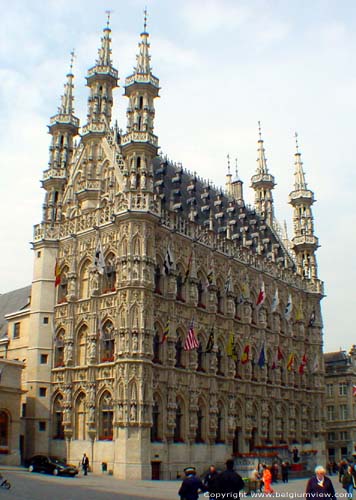
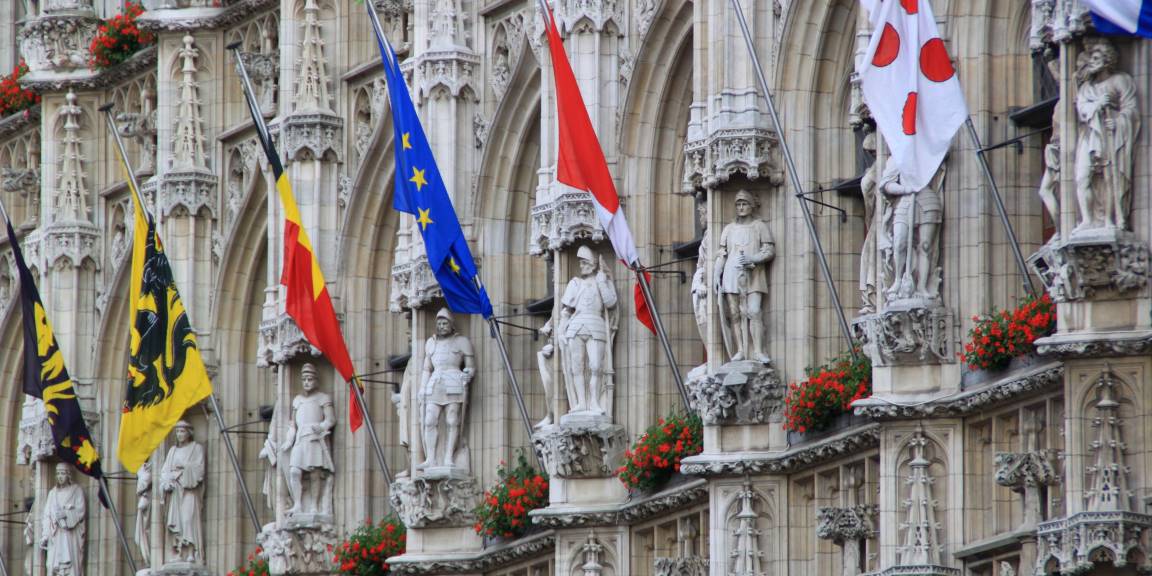
St-Pieterskerk. A 1425 Gothic church has an elaborately carved stone rood screen and wood pulpit and the treasury has two priceless triptychs by Flemish Primitive artist Dirk Boots. The panels have been ‘lost’ several times, including during WWII when Nazis carted them off and hid them in a salt mine.
M Van Museum. This gallery houses mostly 15th to 18th-century religious art and contemporary exhibitions, both of which I am very tired of.
Universiteitsbibliotheek. This grand Flemish Renaissance palace is a WHS library rebuilt after WWI with the financial aid of 400 American universities after being put to the torch in August 1914 during the schrechlitchkeit (terror or ‘hard memories’) of the German occupation. It was then rebuilt a second time after WWII. The public can visit at certain times but the soaring Scandinavian-style brick tower topped with a 3-story cupola can be climbed year-round.
Berguinage of Leuven. A beguinage is a group of 13 neighbourhoods in Belgium that constitute one World Heritage Site, originating in a medieval mystical movement – “a town within a town”. They were produced by ‘religious women’ – spinsters or widows – who wished to live a committed life but independently of the recognized religious orders (with subsequent loss of fidelity and poverty) so they organized themselves into self-supported ‘cities of peace’ with architectural and urban qualities.
The beguinage of Leuven was founded in 1262 and occupied until 1990 and is situated on the banks of the Dyle River. It has a Gothic church, infirmary, kerckecanar and House of Chevres. It was restored during the period of 1963-90. It is owned by the University of Leuven since 1962 and has become the home of mainly professors and students.
After spending 3 days in Brussels, I drove north to see the last of Belgium at Antwerp.
Fort van Breendock. About 20 km north of Brussels, this was originally a pre-WWI Belgian fort that had piled up over the outside walls. In WWII, the Germans used it as a concentration camp for political prisoners. Of the 4500 inmates, only about half survived dying from starvation and some were hung and many tortured. They were overworked clearing all the dirt from the outside in a senseless make-work project.
It is a forbidding, dirty grey colour surrounded by an ugly fence of concrete pillars topped with rebar holding several strings of barbed wire and WWII-era sentry towers at the corners. The inside was just as sober as barracks and torture rooms.


At the front gate is this sign: HALT! Vier Weiter Geht Wied Erachossen! Wie Veider Gaat Wordt Doodgescholen! Qui depasser cette sera fusillé! €10 concession
MECHELEN (pop 83,000)
Converted to Christianity by 8th-century Irish evangelist St-Rombert, Mechelin became and has remained the country’s religious capital, the seat of Belgium’s Catholic primate, and is overloaded with fine churches. It is about 50 km north of Brussels on the way to Antwerp.
St-Romboutskathedraal. This church dominates the whole city with its massive 97m 15th-century tower. Climb the 500 steps for panoramic views. Inside it is a sombre grey but with a wonderful pulpit and choir.

Hof van Brisleyden. This small castle is in the center of the city, and has two courtyards and a museum.
Gudsenwerkind Fort 8. SW of Antwerp, this is difficult to find and more difficult to access. I had to enter a locked wire gate, pass a vehicle barricade and the inner gate was fortunately open. Surrounded by a massive dirt bank and outer wall, it is a huge 2-story brick edifice with an interesting double-circle configuration. It has been partially renovated with a café, rooms, and electricity. It is normally closed but has guided tours available online and run by about 10 volunteers.
Of the eight similar forts, seven still survive.
ANTWERP (pop 504,000)
Belgium’s second city and biggest port, it was the home of baroque superstar, Pieter Paul Rubens.
History. A fort built here during Charlemagne’s time (768-814), it was destroyed by Vikings in 836. It’s a well-protected port on the wide Scheldt River came into its own once the Swin waterway silted up, destroying Bruges’ economy and forcing traders to move east. In 1531, the world’s first specially built stock exchange opened here and by 1555, it was one of Europe’s main trading, cultural and intellectual centers with a population of about 100,000.
Protestants smashed the city’s cathedral in 1566 (Iconoclast Fury) and fanatically Catholic Spanish ruler Philip II restored order but the unpaid garrison mutinied and ransacked the city massacring 8000. It was finally incorporated into the Spanish Netherlands and force-fed Catholicism. Thousands of skilled workers (Protestants, Jews, and foreigners) headed north to the United Provinces (today’s Netherlands). By 1589, the population had more than halved to 42,000 and affluence passed progressively to Amsterdam.
Buy the Antwerp Card (€27 for 24 hours;) online www.visitantwerpen.be or at Centraal or the Visitors Centre – still a good deal if you see all the museums despite several museums being closed (KMSKA, Mode Museum, and Red Star Line Museum).
‘t Zuid
Justitiepalais. Antwerp’s 21st-century law courts have a distinctive series of gleaming titanium “sails”. Designed by Richard Rogers, famous for the Centre Pompidou in Paris, the building is pleasant enough but failed to find the architectural cachet the city hoped for and there’s little for visitors to see inside.
KMSKA. This is one of Europe’s finest art galleries but has been closed for years while it undergoes a total renovation (it was supposed to be open by the end of 2018 but the entire outside is still covered in scaffolding. Its superb collection includes the Belgian greats from Van Eyck to Wouters. I saw some of these in the Rockoxhuis and Onze-Lieve-Vrouwekathedraal.
The monumental 1980 building is a neoclassical masterpiece with copper-winged charioteer statues. In the front is an unusual copper fountain of leaves.
M HKA (Museum van Hedendaagre Kunst Antwerpen). This contemporary art museum is in a wonderful building but the exhibits are the same awful stuff.
Old Antwerp
Grote Markt. Antwerp’s medieval heart features the baroque Brabo Fountain depicting Antwerp’s giant-killing hand-throwing legend. Photogenic guildhalls flank the Italo-Flemish 1565 stadhuis.
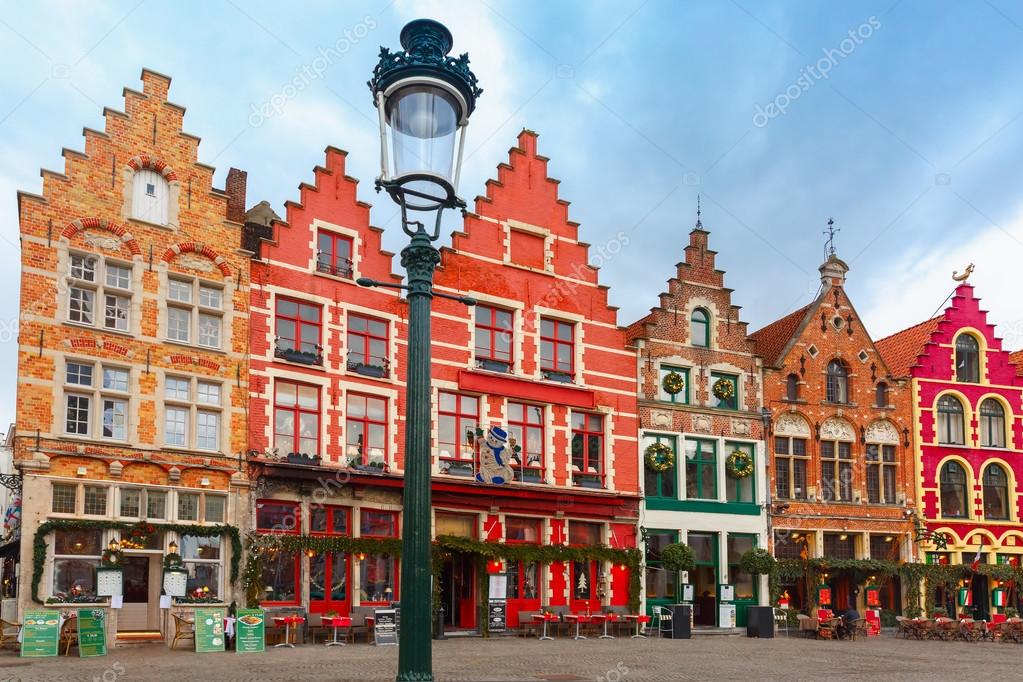
Museum Plantin-Moretus. Giving a museum Unesco World Heritage Status might seem odd – until you see this astonishing place. Once home to the world’s first industrial printing works started in 1562, it’s been a museum since 1865. Christophe Plantin, a bookbinder and leather crafter from France, published his first book in 1555 and soon prominent writers and scientists were using his printing office, the Officinia Plantiniana. He was a shrewd businessman, maneuvering around religious and political conflicts. The publishing firm became multinational with branches in Frankfurt, Leiden, and Paris. In less than 20 years, Plantin’s publishing firm ranked among the top industry leaders. He was the founding father of nine generations of printers in Antwerp.
The medieval building and 1622 courtyard alone would be worth a visit, but the world’s oldest printing press, priceless manuscripts and books (some by Rubens and his brother illustrated by Pieter Paul), and original type sets (special letter types were used to prevent copying) add real flavour. Other highlights are the 1640 library, a bookshop dating from 1700, a valuable painting collection, tapestries, furniture, chandeliers, wood wainscoting, fireplaces, wrought iron fountains, and ancient leather “wallpaper”. It is purposely dimly lit – all the shutters are closed, curtains are drawn and lights dimmed to protect the colors in the displayed books (pages are turned every few months, and reproductions of the most valuable books are displayed). The place is a maze of rooms and stairways.
The business made the southern Netherlands the crossroads of knowledge distribution as they published 55% of all the known scientific books – atlases and books on medicine, astronomy, mathematics, physics, and botany, many in several languages. The Bible was published in five languages – Latin, Greek, Hebrew, Aramaic, and Old Syrian. Antwerp was known as the international ‘City of Books’.
Onze-Lieve Vrouwekathedraal. One of Belgium’s finest cathedrals, it was 169 years in the making (1352-1521). The 123m-high spire is visible from all over Antwerp. The interior is late baroque including four early Rubens canvases and while the KMSA is closed, some of that museum’s religious masterpieces. €4

DIVA – The House of Diamonds. In the back of a diamond retail store, the museum displays special works of art and has videos on cutting and polishing stones and jewelry making.
80% of the world’s diamonds are traded in Antwerp in 4 exchange buildings along pedestrianized Hovenderstraat and Schopstraat. Though now Indian dominated, historically the business was mainly the domain of Orthodox Jews, whose black coats, broad-brimmed hats and long hair still remain a presence.
Het Steen. This is a small but photogenic castle dating from 1200 and occupying the original Gallo-Roman settlement (it is almost the only surviving part of the WHS Antwerp ramparts). There is nothing to see inside the castle and it was closed for renovation anyway. Outside is the humorous statue of Lange Wapper, a tall folkloric ‘peeping Tom’ figure showing off his codpiece to two tiny onlookers.
Sint-Paulusstraat. Don’t miss this church with its fantastic Baroque interior. A former Dominican monastery (1256-1796), it had 1700 monks who were evicted by the French. It then reopened as the parish church in 1803. A 1968 fire destroyed the monastery but thankfully spared the church. The white interior is set off by the 5m wood panelling fronted by magnificent confessionals each with two saints and two angels fronting them. The choir has 8m wood walls. There was no room for the Ways of the Cross and the wonderful wood bas-reliefs are displayed in a separate chapel. The walls are a treasury of art.
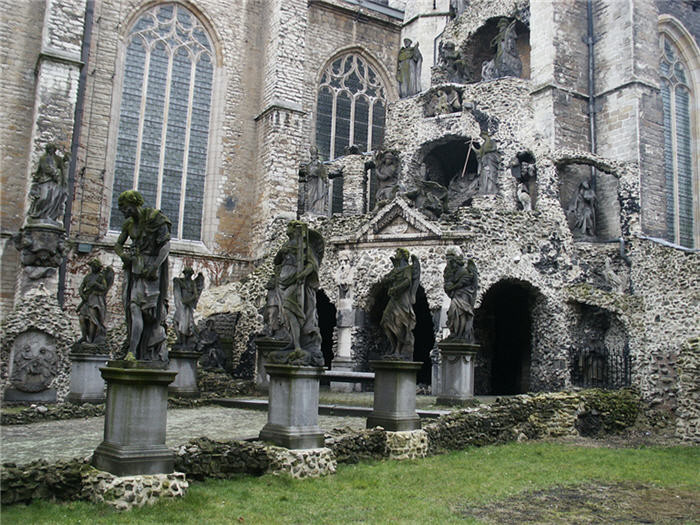
Rockoxhuis. Nicolas Rockoxhuis was a 17th-century Antwerp celebrity: lawyer, city councillor, patron of the arts, and humanist intellectual. His house has a great courtyard garden and although most of his Rubens is now at the Prado and London’s National Gallery, there still is Wildens, Van Dyck, Pieter Bruegel the Younger, and Rubens. While KMSA is being renovated, many of its treasures are displayed in a combined exhibition entitled the Golden Cabinet.
Rubenshuis. Pieter Paul Rubens built this 1611 building as a home and studio. Rescued from ruins in 1937, the building has an indulgent baroque portico, rear façade and formal garden (much being restored and under scaffold when I was there). 14 Ruben canvases are displayed along with period pieces.
St-Carolus-Borromseuskerk. Like Sint-Paulusstraat, this is a wonderful 1621 baroque church that has scads of art and confessionals as nice as Paulusstraat.

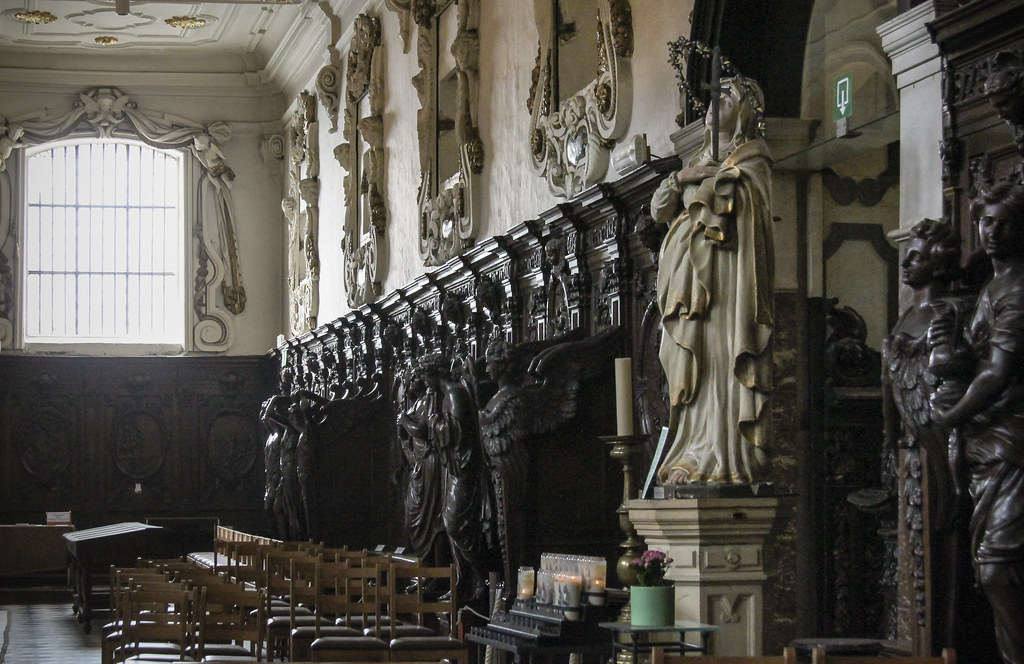
Museum Mayer van den Bergh. He was a wealthy Antwerp citizen who collected art from the 1880s (painting, sculpture, tapestries, and stained glass) with an emphasis on 17th and 18th-century pieces. He died in an accident in 1901 and his mother built the house and created the museum. Highlights are many Pieter Brueghel pieces and the oldest painting in Belgium “Mary with Child and four scenes from her life, an Italian work from 1270.
Station Quarter
Antwerpen-Centraal. This 1905 train station is one of the city’s landmarks and rated as one of the world’s five most beautiful stations. It has a neo-Gothic façade, a vast grey stone and marble main hall with its splendid dome, and multilevel platforms with 2 lower levels added for modern trains and to allow trains to continue through the station instead of the station being an end of the tracks. The platform roof is long barrel-vaulted glass supported by red iron girders.
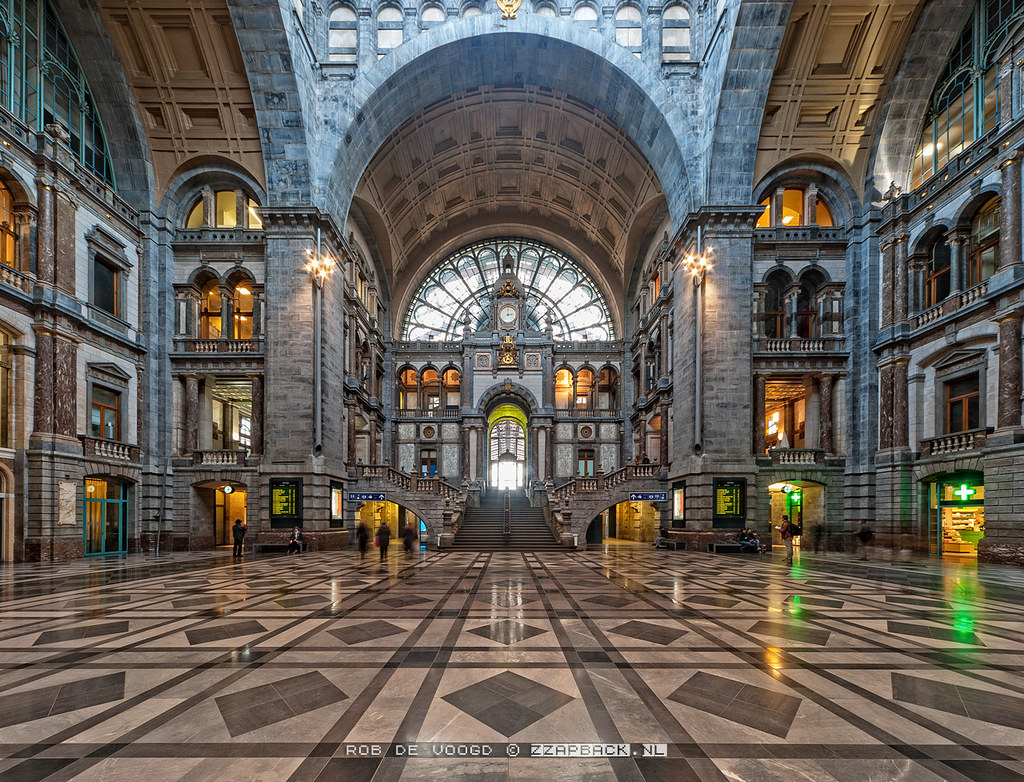

North-Central Antwerp
MAS (Museum aan de Stroom). Opened in 2011, it is a 10-story imposing building with its red/orange exterior and wavy glass accents. Each floor has galleries with rotating exhibits, some free. Take the escalators to the top of the roof for panoramic views of the harbour and all of Antwerp.

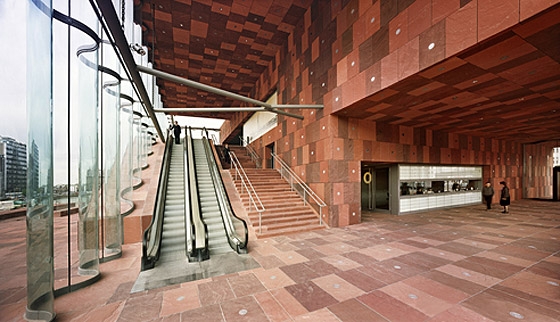
Red Star Line Museum. Over 2 million passengers sailed on Red Star Line ships between 1873 and 1934, the great majority of immigrants bound for America. The museum, housed in the building from which those embarkations took place tells the stories of those individual journeys including model ships.
AROUND ANTWERP
Kasteel Sterckshop. This fairy tale castle is all turrets and towers, crenellated walls, and a display of conical rooflines. Surrounded by a park, the moated (full of water lilies) castle is dressed in stone and red brick. It is about 10 km east of the city center on the way to Westmalle.
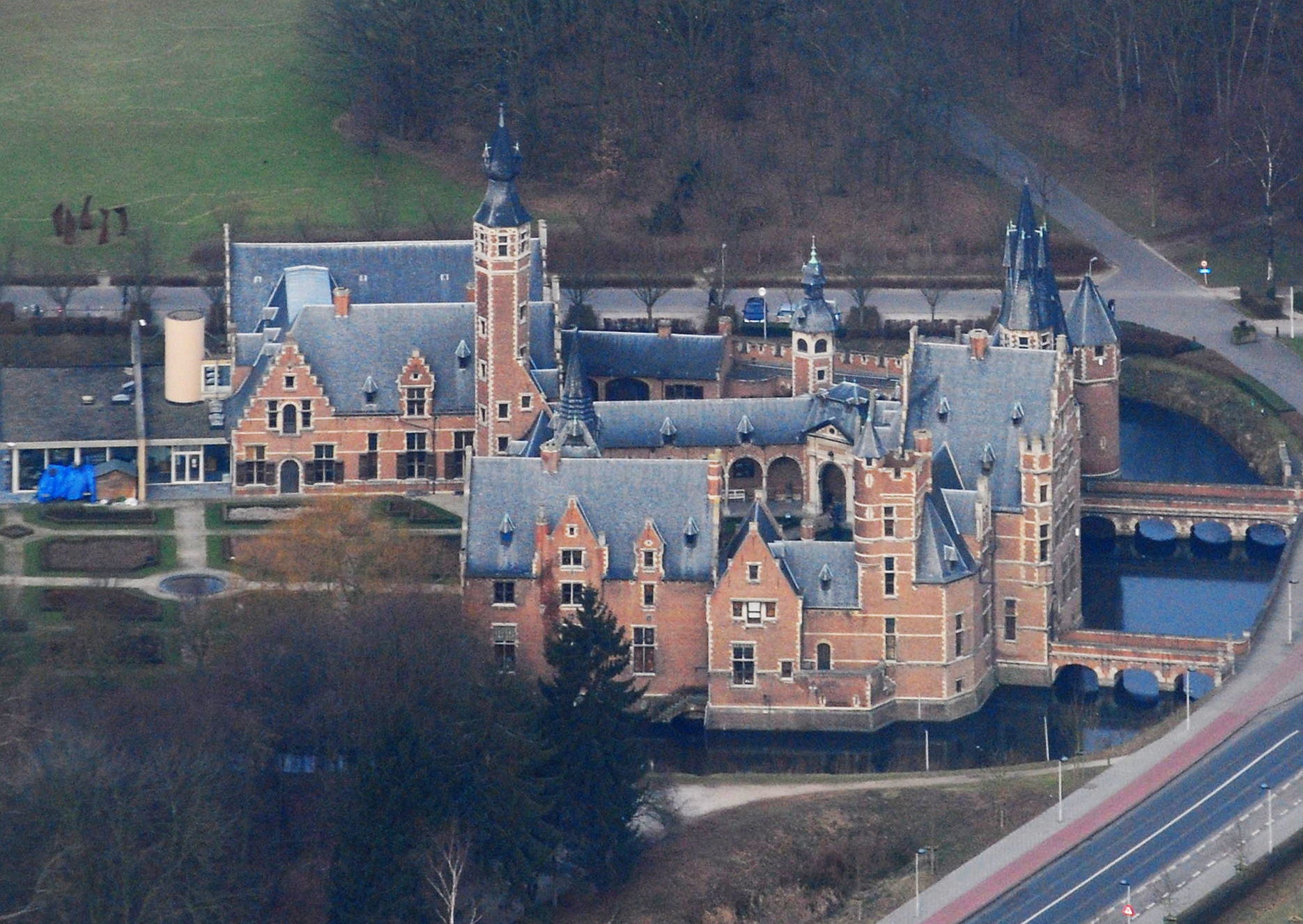
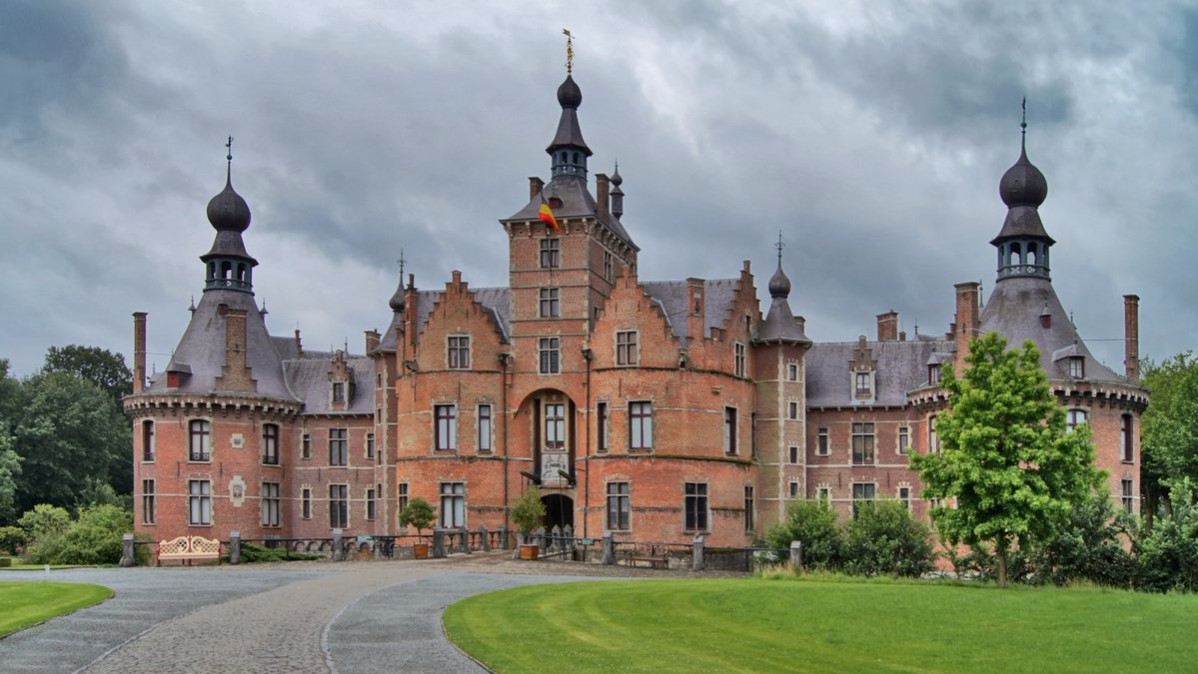
Westmalle Abbey. About 20 km NE of Antwerp and 2kms SW of Westmalle, this monastic complex produces the famous Trappist beer. It is in the pleasant countryside surrounded by pasture and grazing cattle, but it looks more like a prison than an abbey – except the walls are built to keep visitors out. It is a surprisingly modern-looking place – all red brick and surrounded by a moat. At the abbey’s tavern, sample the two classic beers or have them mixed as a ‘half-and-half (3.70).
This was a long detour out and back not really worth the drive and I don’t like beer much.
